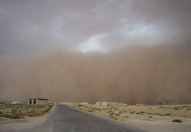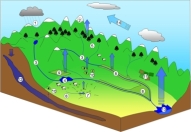Prof. Jason P. Evans
Climate Change Research Centre
University of New South Wales









Evaluating groundwater influences on transpiration variability over Southeastern Australian forests using vegetation greenness metrics.
Decker, M.R., A.J. Pitman, J.P. Evans
AGU Fall meeting, 3-7 December 2012, San Francisco, USA. Abstract
The relationships between vegetation, groundwater, and the interannual variability in evapotranspiration (ET) are explored over Australia using satellite observations and the Community Land Model (version 4). We evaluate several different metrics of vegetation greenness by determining their ability to reconstruct the estimated ET and transpiration variability. We demonstrate that vegetation greenness and interannual ET fluxes are highly correlated, and the ideal greenness metric to represent transpiration fluxes varies spatially. Given the inherent information regarding transpiration fluxes contained in greenness metrics, we use the varying response of these metrics to drought to evaluate land surface model simulations. A land surface model with and without groundwater-vegetation interactions
is used to explore how groundwater impacts the transpiration response to drought. We demonstrate that groundwater is essential to modeling the muted response of transpiration fluxes to drought in Southeastern Australian forests. Omitting groundwater results in a large transpiration response to drought independent of vegetation type, in contrast to the vegetation greenness observations. Our results suggest that vegetation greenness metrics provide a suitable proxy for both total ET and transpiration fluxes, and that disregarding groundwater in forests sustained by deep roots and soil water leads to a large overestimation of transpiration variability during drought periods.
|
|